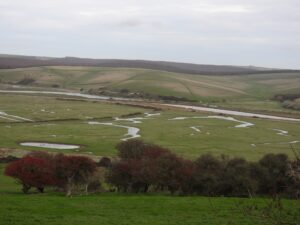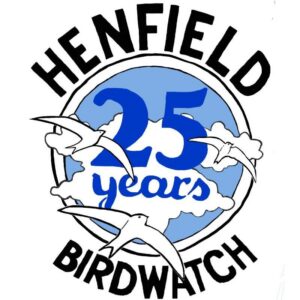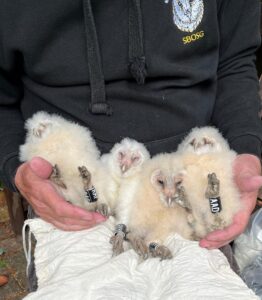By Paul James
December may seem a quiet month for birding, but Sussex offers rich rewards for those willing to brave the winter chill and short daylight hours. A mix of habitats — including coastal estuaries, inland wetlands, downland, heathland and woodland — make it a haven for wintering species.
Coastal Hotspots
As winter progresses, Chichester Harbour, Pagham Harbour and Rye Harbour become magnets for thousands of overwintering waterbirds. Expect large flocks of Brent Goose, Shelduck, Wigeon, Pintail, Teal, Lapwing, Golden Plover, Grey Plover, Curlew, Knot, Dunlin and Redshank, with increasing numbers of Avocet – now a regular winter feature – in both Chichester and Pagham Harbours.
Keen-eyed birders might spot a wintering Greenshank, Spotted Redshank or Whimbrel. Fishbourne Creek in Chichester Harbour has been a consistent location for these in previous winters and is also a reliable for Goldeneye, Red-breasted Merganser and Kingfisher.
Purple Sandpipers winter regularly at a handful of sites in Sussex, of which Brighton Marina and Newhaven Harbour are the most reliable. The walk out to the end of the east arm at Brighton Marina is long and often cold, so a better option may be the east pier of Newhaven Harbour (accessed from Newhaven Tidemills), where the birds can be viewed at very close quarters on a rising tide. Other possibilities at these sites include Fulmar, Guillemot, Razorbill, Shag, Black Redstart and Rock Pipit.
Sea Watching
Along the Sussex coast, seawatching in winter can produce both Red-throated and Great Northern Divers, Red-breasted Merganser and Slavonian Grebe, with Selsey Bill a reliable site for all these species. Flocks of Common Scoter may gather in Rye Bay, sometimes accompanied by a few Velvet Scoter. The sea wall at Pett Level is an excellent — if sometimes rather exposed — place to scan for these.
Inland Wetlands
Inland wetlands such as Pulborough Brooks RSPB Reserve and Amberley Wildbrooks are superb for waterbirds and raptors in December. Numbers of Shoveler, Wigeon, Pintail, Teal and Lapwing gather on floodwater, the latter sometimes accompanied by a handful of Ruff, while Marsh Harrier, Peregrine and occasionally a White-tailed Eagle patrol overhead. As dusk falls, there’s a good chance of seeing a hunting Barn Owl.
The real prize in the Arun Valley, however, is Bewick’s Swan, a species that has declined precipitously as a winter visitor in both Sussex and the UK. A handful still return each winter and may be encountered anywhere between Pulborough Brooks and Burpham — but be sure to make the most of them before they disappear from Sussex altogether.
Downland
Downland can seem almost birdless in winter, but a visit to The Burgh (north of Burpham) may be rewarded with sightings of Grey Partridge and Corn Bunting, both scarce birds in the county. The area is also excellent for raptors: sightings of Common Buzzard, Kestrel and Red Kite are guaranteed, while other possibilities include Sparrowhawk, Hen Harrier, White-tailed Eagle, Merlin and Peregrine.
Heathland
Heathland is another habitat that can seem devoid of birds in winter, but a visit to Old Lodge on Ashdown Forest or one of the West Sussex heaths such as Heyshott Common or Iping Common may, with patience, produce Siskin, Redpoll and even Crossbill, especially with the large numbers of the latter currently in the county.
Woodlands and Farmland
By December, Fieldfare and Redwing are busy feeding on hawthorn berries. Try West Dean Woods for both Brambling and the elusive Hawfinch — the latter often seen from the footpath to Monkton Farm in early afternoon as the birds come in to roost.
Tips for December Birding
• Arrive early – short daylight hours make mornings precious.
• Check both weather and tidal forecasts if planning to visit coastal hotspots. These sites are best on a rising tide as the birds are pushed towards you. Bring a telescope if you have one.
• Check local bird news services for recent bird sightings.











